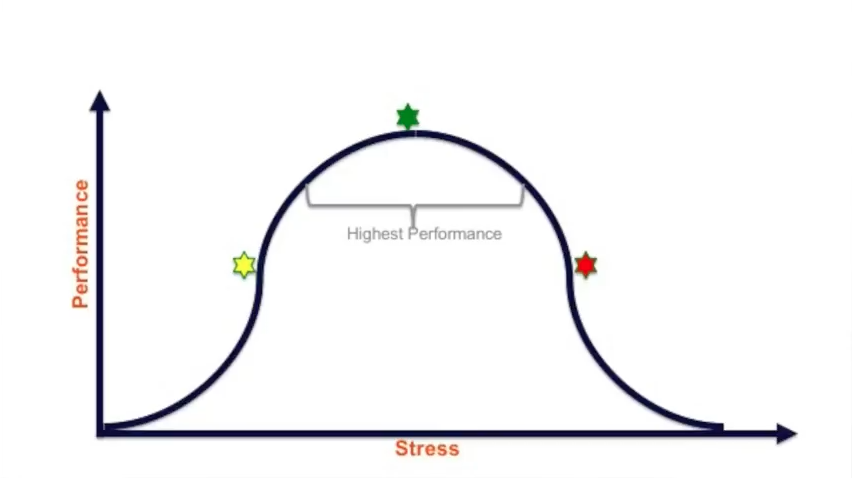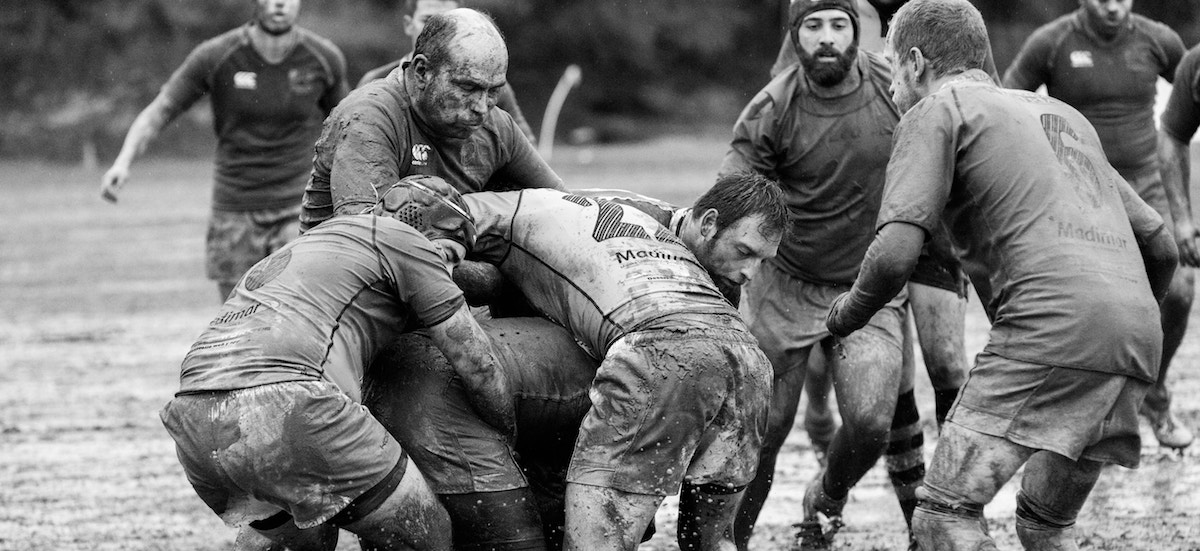Tackle Difficult Conversations
We've all faced difficult conversations in our lives. The best leaders find effective ways to deal with them – and the people who are ineffective, let the important ones slide.
Now, some stuff you do need to let slide. That's understood. But there are high value, important conversations which must be addressed - and if you don't, you take a little problem and make it big.
How skilled are you At quickly giving tough feedback?
"I prefer an ugly truth to a pretty lie." - Shakira
There are many people in the world who would rather have you just to lie to their face, and tell them everything is fine.
As leaders, we want to make sure that we continually let other people know what they're doing well, and dealing with the tough situations that are going to keep them from growing and evolving. As leaders, we're often the only ones who have the ability or the insight to share these challenging things with other people on our team.
The main principle here is to tackle all of your difficult conversations in 48 hours. Not four hours - because if you tackle them right away, you're likely to be emotional. And as we talked about in the other chapters, emotions lead us to problems.
Key Point - Deal with these situations quickly, but not so quickly that you stick your foot in your mouth or make the situation worse.
You need to work on this if you:
- normally say nothing when things go sideways
- explode when people anger or disappoint you
- let little frustrations build up until you reach a breaking point and then irrationally fire someone to just get rid of them
- find that people get defensive or emotional when you give feedback.
In all of these cases, either you're not dealing with it yourself, or you're not skilled in dealing with it with other people.
A Model for Difficult Conversations
Years ago, I was taught a brilliant concept that I call the tough conversation model. It is a wonderful way to approach the most challenging situations that you have. – and it will shock you how effective it is.
Here are the four steps:
- Ask permission - Make sure the person is ready to have a conversation. Something like, "Hey, I've got a bit of a sensitive discussion we need to have. Are you available for us to chat about this?” You're just making sure that they're in the state of mind to actually have this conversation. Don't just barge in and do it.
- State the indisputable facts in about 20 seconds - There are very, very few facts in any situation. Usually, we end up sharing opinions, judgements, things like that. We don't want to touch those. Only share the facts.
- Share your feelings about the situation - These are nonjudgmental feelings that are about you, not about the other person. These are your personal feelings: your frustration, your anxiety, your concern, your worry, your excitement, your disappointment. Ideally, stay away from judgmental phrases. This is only about your reaction. In both the facts and the feelings, they should be things that people can't argue with.
- Suggest a resolution. Introduce a couple of outcomes that might work.
The reason why this model works so well is you get away from tossing out opinions or creating arguments. You're just laying out facts and feelings and then talking about solutions.
The Challenge
- Have one of the tough conversations that you need to have and do it in the next week.
- Fill out your thoughts on each of the four steps in the tough conversation model so that you're well prepared.
When there's tension between people, you can feel it. You know it. They know it. But it takes one person to step up, be the adult, and put the conversation on the table, in a respectful way. Talk about it, clear it up and move on.
Clear Expectations Help People Meet Your Standards
How skilled are you at setting clear expectations and graciously getting people to meet your high standards?
Truth be told, the most successful people generally have the highest standards - that's why their customers trust them to supply their companies. The downside of having really high standards is it can create friction and frustration with the people that work with you. If the standards of the people on your team are lower than yours, it creates a gap.
That's part of the leadership puzzle. The challenge is to figure out how to close the standards gap so you deliver what you want, and please the customers that your company serves.
"Have no fear of perfection, you'll never reach it." - Salvador Dali
The most successful leaders I work with are often perfectionists. They are perfectionists in that they always want things to be as good as they can be, and they're usually just fighting the clock to get the highest quality they can, with the time that they have.
For those types of leaders, instead of backing off and fixing things themselves, or accepting mediocre-quality work, the key is finding ways to teach their people how to deliver what they expect - to get what they want with a lot less friction.
Set Clear Expectations
Great people really do want to find a way to meet your exceptionally high standards. High performers want to deliver high quality work. The problem is that we, as leaders, often fail to let them know exactly what we expect. As a result, they're left guessing, and hoping, and wondering - and that's just a waste of energy.
Starbucks has done an amazing job of training the world how to ask for exactly what they want in their coffee, right down to the temperature they want it to be. The point of this is that we all have preferences, but we need to make them known. Otherwise, we don't get what we want, and other people are robbed of the opportunity to completely please us, to thrill us.
You need to work on this if you:
- hesitate to say what you really want because you don't want to seem demanding to your people. Or, you've had bad experience from being like that in the past.
- often accept results which are less than you expect.
- fix things yourself so that they meet your standards, and don't push the work or the repair or the edits back to your team
- notice the same frustrations keep happening with the same people
- regularly make do with less than ideal situations. You either tolerate things or accept results that just really aren't what you had in mnd.
It's okay to make smart compromises on things that don't matter. The key is to stop making compromises, or fixing things yourself, on things that are important.
Always Do, Never Do
There are many tools in this chapter that will help you master this principle. The simplest one is the "Always Do, Never Do" list:
- Make a list of the five things that people should always do, and never do.
Here's how it works.
You've heard stories about rock stars that only want green M&Ms, or only want a certain colour flower in their dressing room before a big performance. We're not talking about things like that. We're talking about the general, everyday things that you really prefer that people do, or don't do.
For example, for me, there are a few things that I always tell people that work with me. One is what I call my 24/7 rule. If it's a task, it should be completed in 24 hours. If it's a small project, it should be completed in in seven days. And my expectation is that they're done in those time frames without me even specifying or asking. My team should just know to turn things around really quickly.
What do you wish that people always did, or never did, that it makes it much easier for them to work with you? This list should result in both of you ending up being a lot happier, and getting what you want.
Summary
The people that work with you do want to please you, and give you what you want. But if you don't tell them - right down to some of the very specifics - they're often going to be left wondering. And, as a result, wasting time and energy, doing things that don't matter when they could be doing the things that do.
Stress Performance Curve - How Stress Makes High Performers Better
Although it sounds counter-intuitive, high performing CEOs and managers actually need stress to be their best. The key is to understand and work in that optimal area of the stress performance curve - where you maximize performance at a level of stress that is manageable for you.
I wanted to share with you one of my favorite quotes from my book Your Oxygen Mask First:
There is no in-between with leadership. It either slowly destroys your life or it forces you to get stronger.
Now, that might not seem like a positive or motivating quote, but it's the truth. The challenge of building an enduring, great company and doing something amazing in your career is that it takes a big toll on you - and that can be painful; it also could be an absolute blast if you do it right.
Here is another quote from the book about work-life balance, which I think is an absolute silly concept, but here is the way I like to see it:
You don't go to the amusement park roller coaster, and say, "I want to be balanced." No, you want to be as unbalanced as possible because that's the thrill of the ride.
High performers like it when it gets a little bit easy and settles down - to catch our breath - but then we get bored and want to do more. So, this is about making sure there are continual challenges.
Stress Performance Curve

There's a beautiful model* I have found that helps to illustrate what we're talking about here. On one axis is the level of performance, and on the other, the level of stress. Maximum performance comes at this intersection of the optimal amount of stress and what works for you (the green dot in the middle).
Now, this chart is not stable: it moves around to the left and to the right. If you go down and see the yellow star, that is safe place, an easy place. There's not a lot of stress, and there's also not a lot of performance. It's just like a race horse.
Race horses needs competitors to run their fastest. They often cannot run their best if they just out there by themselves. If you look at high performers, there's not enough stress or competition for them to really feel that performance anxiety that brings out their absolute best.
Go for the green
Now, if you look over at the red dot, the red dot is too much. That's the point where the stress starts to kill the person by destroying them on the inside. They can handle it for a bit, but there’s a point where they need to learn and grow to be able to handle it - or maybe it's just a situation that's too much.
As high performing leaders, we want to get in that highest performance zone - right around the green dot - and stay there. Unfortunately, it gets way too much, "Oh my gosh. I feel like I'm gonna die. It's destroying me," to not enough and, "I'm bored."
So, I always ask high performers, or A Players: "Hey, how is your level of challenge?"
If their eyes roll in the back of their head, I know they're in the red zone. If they're smiling and engaged, sitting forward, they're probably in that green zone. And if they're kind of, "Well, you know, I'm getting kind of restless, looking for another challenge or opportunity," I know they're in the yellow. As leaders, our job is to keep pushing them there.
What do you do when they're in that red place?
Double Your Capacity
This is where the learning, the growth, and the development comes in. If you're using the same skills you used five or 10 years ago, you won't be able to handle more stress and challenge. What you need to do is to learn your way out - to keep moving that green dot out, and out, and out, so that your performance level goes up, and the amount of stress and pressure you handle also goes up.
Essentially, that's what all of the 17 habits are about, in my book - 17 habits to help you to mentally and mechanically handle more pressure and challenge, so that you can rise up to your goals, achieve what you want, and still enjoy the ride.
The key point of all of this is that you need to double your capability every three to five years to deserve the designation of leadership. You do that through growing what you know, who you know - and your own resilience. If you don't, even if you may want more responsibility, it may start to slowly destroy you, and that's not fun. Now, if it’s only for a few months, it's fine - work on some strategies, improve, and get better.
The Challenge
- If you haven't already, do the Your Oxygen Mask First Self-Assessment.
- Rate yourself on those 17 habits and then figure out which one you need to work on next.
- After you do the assessment, you’ll be directed to videos on each habit - these will help walk you through some detailed action items to follow up on
The final thought I'll leave you with is for you and your team: If you're finding people are floundering - where that red dot is, where it's just too much - go back, and ask the question:
"What do they need to learn or change to be able to rise up to that level?"
Not, "What do we need to do to reduce the pressure?"
Our job is not to give and take more pressure, but to learn better skills to do it.
If you have any questions, leave a question here. All the best.
* This is based on the Yerkes-Dodson law which refers to a relationship between stimulation and performance.
Day 1 Amazon Thinking
The essence of Day 1 Amazon Thinking - described in Bezos’ 2017 shareholder letter - is how the people at Amazon keep the company fresh by maintaining a customer-oriented focus.
Day 1 describes the fight and fire and determination you have to do all the best things for your clients. Strong in the beginning, it often fades over time as you become more self-oriented versus customer-oriented, which can weaken your business, and really end up hurting you.
Day 2 is stasis, followed by irrelevance, followed by excruciatingly painful decline, followed by death. And that's why it's always Day 1. To be sure, this kind of decline would happen in extreme slow motion - an established company might harvest Day 2 for decades - but the result would still come.
I'm interested in these questions:
- How do you fend off Day 2?
- What are the techniques and tactics?
- How do you keep the vitality of Day 1 inside a large organization?
Such questions can't have a simple answer. There may be many elements, multiple paths, many traps. I don't know the whole answer, but I may know bits of it.
Day 1 Amazon Thinking Essentials
Here's a starter pack of essentials for Day 1 defence - and Bezos gets into these four points and measures, which you can read about in more detail in his letter – and which make a great self-assessment, for you and your team, when you're doing your next planning session:
- Customer obsession. It's about being obsessed with pleasing the customer and knowing that they're always happily dissatisfied - meaning there are more things that they would like or enjoy, but they don't even know yet. So, there are always huge opportunities to please them. And if you watch Amazon, they continually release new products and services that make you thrilled if you're a customer. So, here’s the question for your team: On a scale of zero to 10, how would we rate a true customer obsession, compared to this Day 1 thinking?
- Outcome-orientation. Bezos says that many companies, as they grow, become process-orientated e.g. "We're doing the work, we're doing the project, we're revising the policy, we're implementing the system," but they forget to measure, "Did we get the dollars and cents out of it? Or the results we actually required?" When you're a start-up, it's easy because you have no cash, and everything has to work - but when you get bigger, with more resources, people often start to focus on doing the work versus getting the result. I see this in companies all the time: people are doing good work but because the finish line is not clear enough, they sometimes don't get there.
- Early adoption of trends. Those of you who know me, know I love trends and seeing what's coming next - that's part of feeding our strategic brands. But what Bezos talks about is not resisting change and eagerly trying out new things. You don't need to be the first, you don't need to be on the bleeding edge of innovation, but you need to do enough to continually adopt change, embrace it and be part of it.
- High-velocity decision making. Bezos talks about how, as companies get bigger, with more stakeholders, it's easy to get lost in debates while trying to make the right decision - or the perfect decision. This fits into what Jim Collins calls "bullets versus cannibals." Let's do bullets and tests and keep moving versus waiting for the one big move - or moving too quickly on the one big move. But he asks, “How quickly are we making the important decisions?”
In another article Bezos talks about type A and type B decisions:
- Type A is a two-way door. You can make the decision and you can back out of it. With that, you should decide very quickly because it's easy to reverse.
- Type B is a one-way door. You sign a massive contract for 10 years or make a big, long-term commitment - and that needs rigorous debate and more information.
Many companies make type B decisions, using a hardy decision process to answer a simple question, or they'll use late decision-making for a hardy one, and that obviously becomes a problem. The key question is "Are we making our decisions very quickly, so we can move and take care of the customer?"
Summary
- Day 1 thinking keeps us fresh, keeps us vibrant, keeps us taking care of our customers, and actually makes your company a more enjoyable place to work because stuff happens.
- Day 2 is easy to fall into because we get comfortable, and that’s extremely risky. Never mind the fact that it's not rewarding.
Get Your Team Making Decisions on Their Own
How skilled are you at helping people become strong, independent leaders?
Are you bombarded by people asking questions, or have a long list of unresolved issues? Learn how to develop strong, independent leaders, and to free your time for your best work.
The funny thing about becoming a leader is that you usually get there because of lots of experience and capability. And when you're in that position, it becomes very common for people to want to ask you questions and for your opinion. And our egos love it. "Hey Kevin, what do you think about this? What do you think about that? What do you think about this? What should I do? What's your advice?" They are music to our ears. Those kinds of questions make us feel great and valued and important.
Unfortunately, as a leader, if you fall into the trap of actually answering them, you're doing a bad job. Our job, as leaders, is to teach people to make their own decisions, to make themselves independent, not dependent; and to help them get stronger on their own without us. If we keep answering their questions, we're keeping them from learning on their own and mastering things themselves.
There's a proverb that you've probably heard a 1000 times in your life, "Give a man a fish, and he eats for a day. Teach a man to fish, and he eats for a lifetime." This is what we're talking about with leadership: teaching people how to think for themselves, how to decide for themselves, how to take on responsibility for themselves.
Key point - Require your team to make 90% of the decisions, in their area, on their own.
When you stop being chief problem solver, train people to solve things on their own, sooner or later, they don't need you. And either your ego will love that, or it'll terrify you. Either way, just know this is what helps you to grow, and it's extremely rewarding to watch others grow as well.
You need to work on this:
- If you are bombarded, every day, with people asking your opinion, even though you might like it.
- People ask you the same types of questions over and over again
- You're involved in many small to medium-sized decisions because your team won't make a move without you
- You have a long list of unresolved issues and open debates
- You regularly get stuck handling other people's problems
- The hot potato gets passed to you, and for some reason you think you're supposed to manage it versus handing it back.
One of the key techniques in this chapter is teaching people how to break through the "I don't knows". When someone comes to you with a challenge and you ask them, "Well, what do you think we should do in this case?" or, "How would you solve this on your own?", the most common response is, "I don't know." Interesting, but I found that's actually not the truth. What they're really saying to you is, "I can't come up with a good answer at the moment."
Breaking Through The "I Don't Knows"
So, here's a technique called breaking through the I don't knows that works really well:
Team member: "Hey, I'm not sure what to do here. What do you think?
YOU: "Well, what do you think you should do?"
Team member: "I don't know."
YOU: "Well, take a guess."
Team member: "I don't know."
YOU: "Well, take a wild guess. What is something you could do?"
Team member: "I don't know."
YOU: "Well, what would you do if I wasn't here to help you and you had to decide?"
By now, they should be coming up with something. Even if they don't, your response would be, "Well, if your life depended on it, what would you do?" If they still don't know, "Well, if your children's lives depended on it, what would you do?"
And it's starting to get a little bit silly, but you get the point. People almost always know. People are innately intelligent, they're innately creative. Our job is to drag it out of them.
If you go through this sequence it just pushes back and forces them to think, and 95% of the time something great comes out of their mouth.
The truth is they do know. They're either just having a problem accessing it, or they're afraid to say.
Summary
Make people think for themselves, and they'll actually get better at it. If you want to grow, your people have to grow. And unfortunately, often our people don't grow because we're not putting enough of the onus of the thinking on them.
You can stop being Chief Problem Solver quite easily, and train your people to make most of the decisions on their own. If you're worried about them making bad decisions, get them to come to you with recommendations, and run that by you first. No matter what, if you're continually answering trivial, low level questions, there's no way you're going to move ahead to a higher level and odds are, you're holding your people back.
Leverage Business Advisors to Quadruple Your IQ
How effective are you at gaining insights & opinions from true experts in business and in life - and leveraging the value of trusted business advisors to support your strategic and life decisions?
These advisors are people who have done what you are trying to do many times before, in both business and in life.
"Surround yourself only with people who are going to lift you higher." - Oprah Winfrey
I'm really passionate about this because, all too often, I see people take advice from people that they just shouldn't listen to. And if the person isn't a master of the situation that you're trying to solve, or hasn't solved a situation like this many times before, there's likely risk in getting this person's advice. Whether it's a lawyer, an accountant, a personal trainer, a videographer, a coach, a speaker, a consultant, a therapist, it doesn't matter. You don't want to be people's guinea pig.
In his book Outliers, Malcolm Gladwell talks about how mastery comes once you get 10,000 hours of practice. So, when we're looking for advisors, that's who we're looking for: people who already have their 10,000 hours, have made the mistakes, have had the lessons, are beyond the conventional wisdom, are beyond the theoretical learning - who have true wisdom based on their own experiences.
Key point: Have a team of 24 amazing experts literally a text away.
You want to have a whole bunch of amazing people that you can rely on in work, self, and life that you can get hold of right away, to help you solve your most important challenges or leverage your biggest opportunities.
You need to work on this if:
- The full weight of every decision rests solely on your shoulders
- You have doubts about major upcoming strategic decisions
- When you review the list of work, self, and life advisors in the chapter, it's clear you have important missing links
- When you get stuck on a decision, you often don't know whom to call, or it doesn't even occur to you to reach out to someone
- You dislike, don't trust, or hesitate to call your current advisors. That's a pretty bad sign.
If you're a CEO, it's a CEO who's already been there and done that. If you're an executive, it's someone who is already much farther down the journey than you are currently.
No matter what, you want to find someone who is already where you want to be in five or 10 years. These are people that have already climbed the mountain that you're going to climb or built the business that you want to build. These business advisors, who have already been there and done that, are often willing to reach out a helping hand, and give you advice or direction that will accelerate your ability to get there too.
Worksheet
Download the Expert Scorecard and start by listing your current advisors in column one. Notice the areas where you lack experts. These are items for your to-do list.
Find the 14Xers
Who are the people you know that are 14Xers? These are the people in your network who are 14 times ahead of you, or have done what you want to do 14 times. Connecting with these business advisors will make your journey much easier, and ideally more fulfilling too.





